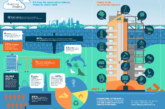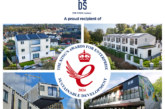 Shona Snow, Head of Procurement for the London & SE Region at LHC, discusses why the public sector needs to work with more SMEs.
Shona Snow, Head of Procurement for the London & SE Region at LHC, discusses why the public sector needs to work with more SMEs.
Traditionally, public sector procurement focuses on businesses that can demonstrate the most cost-effective and efficient methods to avoid risk. This often works in favour of larger businesses. But, if we want to improve social impact, drive economic recovery, and change the face of the construction industry, we need to increase SME participation and bring new talent to the forefront.
It is an experience that we recently shared at Professor David Mosey and King’s College London’s Open Forum, after working with micro-SMEs through our Architect Design Services (ADS) and Multi-Disciplinary Consultancy Services (MDC) frameworks.
Our ambition with MDC was to provide high quality and reliable consultancy services, delivered by an ethnically diverse supplier base. This meant appointing a range of company sizes, not just the big players, and encouraging them to collaborate. With construction attracting a greater share of SMEs than any other sector, it makes sense to look at this scale of business. It is here that innovation can often be found.
A process for collaboration
It is a topic that I have discussed with many smaller businesses, to understand how they view their place in the sector.
“As a sole trader I can introduce new methods, innovations, or efficiencies to enhance my work when needed,” explained Garry Taylor, from GJ Taylor Consultancy. “For a large enterprise, it would be an enormous cost with training, so they can’t respond to innovation as quickly.
“There’s always a place for large contractors and consultants, and clients still need those players to provide scaled up resource, but SMEs remain a great influencer of new trends, processes, technology, digitisation and innovation.”
Nii Klotey Quaye of Quaye Services was recently appointed to our MDC framework. “With large companies there will be more red tape,” Nii said. “Those processes are there for a reason and to safeguard client interests, but micro-SMEs can work more fluidly and think creatively; they are able to make decisions that aren’t as restricted.”
Bailey Garner, also on our MDC framework, has crossed the threshold from ‘small’ enterprise to ‘medium’ in the last few years. Managing Partner Andy Tookey said: “With micro-SMEs it’s usually led by the owner, which makes everything more personal. If you do a bad job, you take it personally, if you lose it, win one — it’s all important to you. And, whilst a larger consultancy may have the resources to invest in R&D, leaving smaller organisations to follow their lead or play catch up, there are times when small allows for more agility.
“When legislation changes it can be like turning a tanker for a large company — you need to get a lot of people to pull in the same direction and operate consistently. A small company can be very responsive.”
Bringing new companies to the forefront
When we procured our ADS framework, we wanted a mix of:
- Practices with proven capability in public sector.
- New and emerging practices.
- Diverse talent typically overlooked by traditional procurement methods.
To achieve this, we carried out months of market engagement before designing a process to evaluate a practice’s approach to equality, diversity, and inclusion and the impact that this had on their design and delivery. This included reviewing who they collaborate and work with, and how they reach out to communities and advocate for them. If we do not do this, we are missing out on a wealth of talent.
My experience of micro-SMEs is that, not only do they deliver innovative work, but they have also made huge steps toward reducing inequalities within construction. With huge challenges on the horizon for the industry, a diverse and broad supplier base has never been more important. And by changing the ways in which we procure our frameworks, we have laid the foundations for others to drive their own change.









